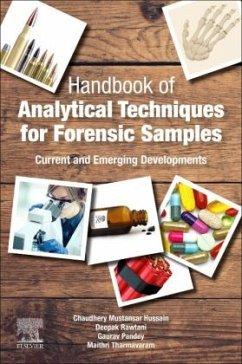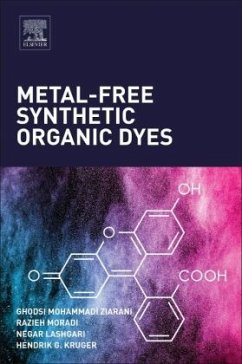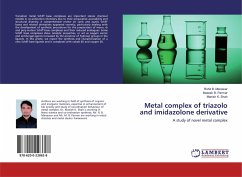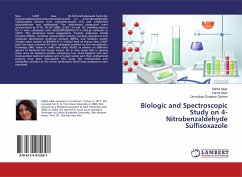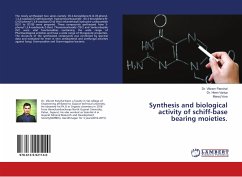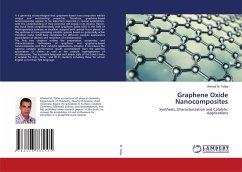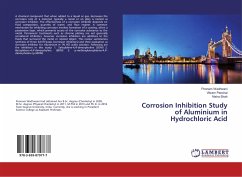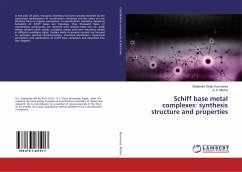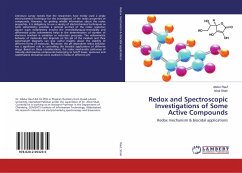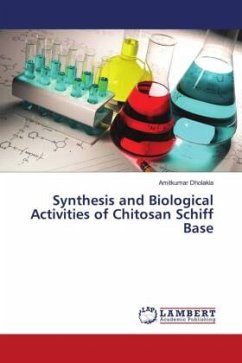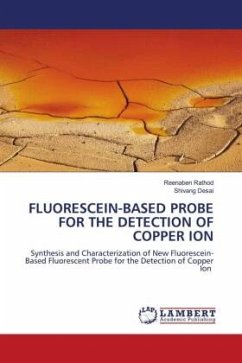
FLUORESCEIN-BASED PROBE FOR THE DETECTION OF COPPER ION
Synthesis and Characterization of New Fluorescein-Based Fluorescent Probe for the Detection of Copper Ion
Versandkostenfrei!
Versandfertig in 6-10 Tagen
40,99 €
inkl. MwSt.

PAYBACK Punkte
20 °P sammeln!
Various transition metal ions such play key role in human body and environmental processes; deficiency or accumulation of particular ion will create problems and to avoid or resolve it the regulation and detection of ion is of prime importance. To detect the concentration of metal ion various analytical methods are available but among these, UV-Vis absorption and fluorescence emission spectroscopy are attractive approaches because of their high sensitivity, facile operation, and the widespread availability of equipment for analysis. This book is focus on detailed literature review for the vari...
Various transition metal ions such play key role in human body and environmental processes; deficiency or accumulation of particular ion will create problems and to avoid or resolve it the regulation and detection of ion is of prime importance. To detect the concentration of metal ion various analytical methods are available but among these, UV-Vis absorption and fluorescence emission spectroscopy are attractive approaches because of their high sensitivity, facile operation, and the widespread availability of equipment for analysis. This book is focus on detailed literature review for the various molecular sensor for the copper ion and it's efficiency to sense the copper ion; apart from this is also focus on synthesis, characterization and application of fluorescein-based Schiff base (FNSB), 1,4-bis(1-fluorescein)-2,3-diaza-1,3-butadiene (3) as a highly selective colorimetric and fluorometric chemosensor for Cu2+ in organic solvent as well as in aqueous solution at physiological pH = 7.4.



